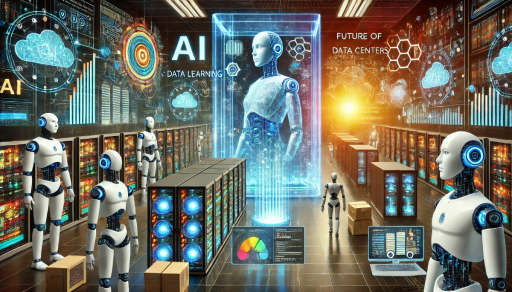Practical implementation is a vital component of data science education, enabling students to apply theoretical concepts to real-world scenarios. Through hands-on projects, case studies, and internships, students develop essential practical skills for success in the field. This approach enhances understanding of the complexities involved in working with large datasets, machine learning algorithms, and data visualization techniques.
It also fosters problem-solving and critical thinking abilities, which are crucial in the data science industry. Furthermore, practical implementation allows students to build a portfolio of real-world projects, demonstrating their capabilities to potential employers. This experience can provide a competitive edge in the job market and showcase the ability to apply data science techniques to complex problems.
Additionally, practical experience builds confidence and deepens passion for the field. Integrating practical experience into data science education is essential for preparing students for the challenges and opportunities they will face in their careers. It bridges the gap between theoretical knowledge and real-world application, ensuring that graduates are well-equipped to contribute effectively in professional settings.
Key Takeaways
- Practical implementation is crucial in data science education to bridge the gap between theory and real-world application.
- Challenges in bridging the gap include limited resources, time constraints, and the need for updated technology and tools.
- Strategies for integrating practical experience into data science education include project-based learning, industry collaborations, and hands-on training.
- Hands-on projects and case studies play a vital role in providing students with real-world problem-solving experience in data science.
- Collaborating with industry partners provides students with real-world exposure and the opportunity to work on industry-relevant projects.
Identifying the Challenges in Bridging the Gap
Limited Access to Real-World Datasets and Industry Tools
One of the primary challenges in bridging the gap between theory and practice in data science education is the lack of access to real-world datasets and industry-standard tools and technologies. Many educational institutions may not have the resources or partnerships with industry organizations to provide students with hands-on experience.
Disconnect between Academic Curriculum and Industry Demands
Another challenge is the disconnect between academic curriculum and industry demands, leading to a gap in the practical skills required by employers. This disconnect can result in students not receiving the necessary training to meet the needs of the industry.
Limited Faculty Expertise and Collaboration
Furthermore, there may be a limited availability of experienced faculty members who can guide students through practical implementation. Data science is a rapidly evolving field, and it can be difficult for educators to stay updated with the latest industry trends and technologies. Additionally, there may be a lack of collaboration between educational institutions and industry partners, making it challenging for students to gain exposure to real-world projects and work experience opportunities.
Strategies for Integrating Practical Experience into Data Science Education


To address the challenges in bridging the gap between theory and practice in data science education, several strategies can be implemented. One approach is to establish partnerships with industry organizations to provide students with access to real-world datasets, tools, and technologies. By collaborating with industry partners, educational institutions can ensure that their curriculum aligns with industry demands and provides students with the practical skills needed for success in the field of data science.
Additionally, industry partnerships can create opportunities for internships, mentorship programs, and guest lectures by industry professionals, allowing students to gain valuable insights and hands-on experience. Another strategy is to incorporate hands-on projects and case studies into the curriculum, allowing students to apply their theoretical knowledge to real-world scenarios. By working on practical projects, students can develop problem-solving skills, critical thinking abilities, and a deeper understanding of data science techniques.
Moreover, hands-on projects can help students build a portfolio of work that demonstrates their practical skills to potential employers. Additionally, educators can leverage online platforms and resources to provide students with access to real-world datasets and tools for practicing data science techniques outside of the classroom.
The Role of Hands-On Projects and Case Studies
Hands-on projects and case studies play a crucial role in integrating practical experience into data science education. These activities allow students to apply their theoretical knowledge to real-world scenarios, develop problem-solving skills, and gain a deeper understanding of data science techniques. By working on hands-on projects, students can explore different aspects of data science, such as data cleaning, analysis, visualization, and machine learning modeling.
This practical experience helps students build confidence in their abilities and prepares them for the challenges they will encounter in their careers. Furthermore, hands-on projects and case studies enable students to build a portfolio of work that showcases their practical skills to potential employers. This portfolio can include projects that demonstrate a student’s ability to solve complex problems using data science techniques, which can set them apart in a competitive job market.
Additionally, hands-on projects allow students to collaborate with their peers, share ideas, and learn from each other’s experiences. This collaborative learning environment fosters creativity and innovation, preparing students for the dynamic and team-oriented nature of the data science industry.
Collaborating with Industry Partners for Real-World Exposure
Collaborating with industry partners is essential for providing students with real-world exposure and practical experience in data science education. By establishing partnerships with industry organizations, educational institutions can ensure that their curriculum aligns with industry demands and provides students with the skills needed for success in the field of data science. Industry partners can provide access to real-world datasets, tools, and technologies, allowing students to gain hands-on experience with industry-standard practices.
Additionally, industry partnerships can create opportunities for internships, mentorship programs, and guest lectures by industry professionals, providing students with valuable insights and networking opportunities. Moreover, collaborating with industry partners can help educational institutions stay updated with the latest industry trends and technologies. Industry professionals can provide input on curriculum development, share best practices, and offer guidance on the practical skills required by employers.
This collaboration ensures that students are equipped with the knowledge and skills needed to excel in the rapidly evolving field of data science. Furthermore, industry partnerships can create pathways for employment opportunities, as students may have the chance to showcase their skills and network with potential employers through industry-sponsored projects and events.
The Impact of Internships and Work Experience Programs
Practical Experience and Career Preparation
Internships and work experience programs play a significant role in providing students with practical experience and preparing them for careers in data science. These programs offer students the opportunity to apply their theoretical knowledge to real-world projects, gain exposure to industry-standard practices, and develop professional skills in a real work environment.
Networking and Career Exploration
Internships also allow students to network with industry professionals, gain mentorship from experienced practitioners, and explore different career paths within the field of data science.
Insights into Industry Practices and Career Development
Furthermore, internships and work experience programs provide students with valuable insights into the day-to-day responsibilities of data science professionals. By working alongside experienced practitioners, students can gain a deeper understanding of industry practices, challenges, and opportunities. This firsthand experience helps students make informed career decisions and develop a clearer vision of their professional goals within the field of data science.
Employment Opportunities
Additionally, internships can lead to employment opportunities, as many companies use internships as a pipeline for recruiting top talent.
Ensuring Continued Professional Development for Data Science Practitioners
Continued professional development is essential for data science practitioners to stay updated with the latest industry trends, technologies, and best practices. As the field of data science continues to evolve rapidly, practitioners must engage in lifelong learning to enhance their skills and remain competitive in the job market. Educational institutions and industry organizations can play a crucial role in providing opportunities for continued professional development through workshops, seminars, online courses, and networking events.
Moreover, mentorship programs can provide practitioners with guidance and support as they navigate their careers in data science. Experienced professionals can offer valuable insights, share best practices, and provide advice on career advancement opportunities. Additionally, professional organizations and communities can create platforms for practitioners to connect with peers, share knowledge, and collaborate on innovative projects.
By fostering a culture of continued professional development, the data science community can ensure that practitioners are equipped with the skills and knowledge needed to address the challenges and opportunities of an ever-changing industry landscape. In conclusion, practical implementation is essential for preparing students for successful careers in data science. By integrating hands-on projects, case studies, internships, and industry partnerships into data science education, educational institutions can provide students with the practical skills needed to excel in the field.
Furthermore, continued professional development is crucial for practitioners to stay updated with industry trends and enhance their skills throughout their careers. By addressing the challenges in bridging the gap between theory and practice, educational institutions and industry organizations can ensure that the next generation of data science professionals are well-equipped to make meaningful contributions to the field.
If you’re interested in learning more about the practical implementation of data science, you may also want to check out this article on what data centers are and why they are important. Understanding the role of data centers in storing and processing large amounts of data is crucial for anyone looking to apply their data science skills in a real-world setting.
FAQs
What is data science education?
Data science education refers to the process of learning and acquiring the knowledge and skills necessary to analyze and interpret complex data sets. This includes understanding statistical methods, programming languages, machine learning techniques, and data visualization tools.
What is practical implementation in data science?
Practical implementation in data science refers to the application of data science techniques and methodologies to real-world problems and scenarios. This involves using data to make informed decisions, develop predictive models, and derive actionable insights for businesses and organizations.
What is the gap between data science education and practical implementation?
The gap between data science education and practical implementation refers to the disconnect between the theoretical knowledge and skills taught in data science programs and the actual application of these concepts in real-world settings. This gap often leads to challenges for data scientists when transitioning from academic or training environments to professional work environments.
How can the gap between data science education and practical implementation be bridged?
The gap between data science education and practical implementation can be bridged through various means, including hands-on projects and case studies, internships and industry collaborations, mentorship programs, and continuous learning and professional development opportunities. Additionally, incorporating real-world datasets and problem-solving exercises into data science curricula can help students gain practical experience.
Why is it important to bridge the gap between data science education and practical implementation?
Bridging the gap between data science education and practical implementation is important because it ensures that data scientists are equipped with the necessary skills and experience to effectively apply their knowledge in real-world settings. This not only benefits the professionals themselves but also contributes to the overall success and impact of data science in various industries and sectors.








